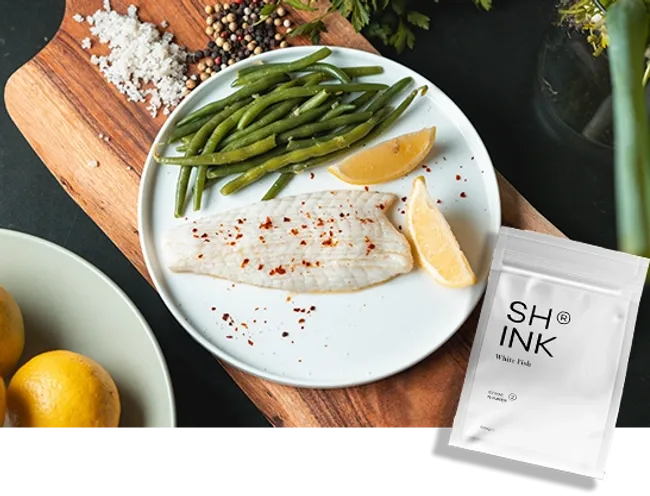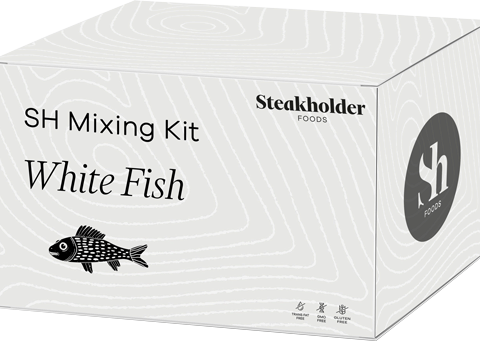Steakholder Foods (Nasdaq: STKH) has created two new blends called SHMeat and SHFish, designed for 3D printing plant-based fish and steak products. According to Steakholder Foods, a highly regarded unnamed consultant confirmed that all ingredients used in the new blends have already been approved for use in the United States and have achieved Generally Recognized as Safe (GRAS) status, a designation by the U.S. Food and Drug Administration (FDA) indicating their safety for intended use in food.
The SHMeat Beef Steak blend and SHFish White Fish blend are the company’s flagship products. They aim to replicate the taste and texture of traditional meat and fish while offering consumers a sustainable and ethical choice.
Aiming to cater to different tastes, Steakholder Foods also revealed it is developing additional blends, including SHMeat Beef Asado, SHMeat Beef Tenderloin, SHMeat Beef Flank, SHMeat Chicken Fillet, and SHFish Salmon.
Steakholder Foods’ production machines use two types of proprietary 3D printing technologies to mimic the texture of meat and fish. One of these called Drop Location in Space (DLS), is leveraged for fish and seafood production to create delicate textures. Meanwhile, Fused Paste Layering (FPL) is used to produce meat and replicate its fibrous texture. These technologies are designed to integrate into existing, traditional food factories. The machines are built to the scale of industry demands while adhering to the strictest food safety standards outlined by the European Hygienic Engineering & Design Group (EHEDG), a non-profit consortium of equipment manufacturers, food industries, research institutes, and public health authorities.
“As we introduce our SHMeat and SHFish blends to the U.S. market, we stand at the cusp of a new era in food technology. Our advanced 3D printing technologies are not just a testament to innovation but also a commitment to sustainability and health,” remarked Arik Kaufman, CEO of Steakholder Foods. “These products represent our dedication to providing consumers with food options that are not only delicious but also responsible choices for our planet. We believe that our entry into the U.S. market is a significant step towards a future where the food we eat contributes to a healthier society and a more sustainable world.”
It’s important to note that while the ingredients for these blends have received GRAS status, a critical step in demonstrating ingredient safety, it might not be entirely equivalent to FDA approval for consumption. However, it is a significant step toward ensuring safety and compliance with food regulations. Companies typically need to meet additional requirements and obtain approvals before selling their products to consumers, especially for new food products like blends to use in 3D printed plant-based alternatives. Additional steps may include notifying the FDA about using these ingredients, ensuring product labels comply with FDA regulations (including accurately listing ingredients, nutritional info, and allergen warnings), and conducting food production facility inspections.
The regulatory landscape for 3D printed food is still evolving, and companies are actively working with regulatory authorities like the FDA to ensure compliance and safety standards are met before starting to commercialize their products. The alternative meat industry in the U.S. witnessed some progress in regulatory approvals, notably with the FDA’s authorization of lab-grown chicken by Eat Just and Upside Foods‘ cultivated meat. While these approvals represent a potential shift in the American market towards new products in the alternative meat industry, many have raised concerns about the sustainability of lab-grown meats. However, an undoubtedly growing demand for sustainable and ethical food options drives the interest in alternative meats, including plant-based ones. This is why startups in the alternative meat industry are leaning into partnerships and collaborations with food technology firms, research institutions, and regulatory bodies to accelerate innovation and bring 3D printed plant-based meats and other alternative options to market.
There has been a significant increase in interest and investment in 3D printing technology for alternative meats in the U.S. Several startups and established companies are already exploring 3D printing to produce plant-based meats with unique textures and flavors. Moreover, advances in 3D printing have made it more feasible to create intricate structures and textures that look and feel like traditional meats; this includes plant-based options that want to replicate the taste and mouthfeel of meat products (although this will be one of the toughest hurdles for these innovators).
For now, Steakholder Foods is dedicated to ensuring that its production process aligns with regulatory standards, including those set by the Food Safety Modernization Act (FSMA), Good Manufacturing Practices (cGMPs), and other necessary regulations as recommended by consultants. As it enters the U.S. market, the Israeli-headquartered brand is actively seeking partnerships with companies in the plant-based meat and fish sector, as well as traditional producers, looking to diversify and enhance their product offerings. The company believes that these partnerships can help drive progress in shaping a future where food can benefit the planet.
Subscribe to Our Email Newsletter
Stay up-to-date on all the latest news from the 3D printing industry and receive information and offers from third party vendors.
Print Services
Upload your 3D Models and get them printed quickly and efficiently.
You May Also Like
The Dental Additive Manufacturing Market Could Nearly Double by 2033, According to AM Research
According to an AM Research report from 2024, the medical device industry, specifically in dentistry, prosthetics, and audiology, is expected to see significant growth as these segments continue to benefit from...
Heating Up: 3D Systems’ Scott Green Discusses 3D Printing’s Potential in the Data Center Industry
The relentless rise of NVIDIA, the steadily increasing pledges of major private and public investments in national infrastructure projects around the world, and the general cultural obsession with AI have...
AM Research Webinar Explores Continuum’s Sustainable Metal Additive Manufacturing Powders
Metal additive manufacturing (AM) powder supplier Continuum Powders is working to develop solutions that empower industries to reduce waste and optimize their resources. An independent life cycle assessment (LCA) of...
3D Printed Footwear Startup Koobz Lands $7.2M in Seed Round
California-based Koobz is focused on reshoring the U.S. footwear supply chain with advanced manufacturing processes, including 3D printing. The startup just announced that it has added $6 million to its...




































